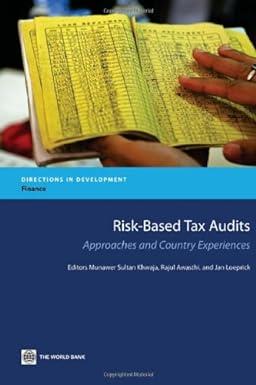Question
Consider consolidation adjustments for intra-group transactions in more detail, profit on merchandise sales was 80%* for Parts Palace and 90%* for Smashed for all sales

Consider consolidation adjustments for intra-group transactions in more detail, profit on merchandise sales was 80%* for Parts Palace and 90%* for Smashed for all sales transactions including inter-group transactions (* = as a percentage of sales)
provide a spreadsheet showing the consolidation adjustments in journal form only for the following intra-group transactions during 2019 (all figures below are in $000s):
1. Parts Palace sold Smashed merchandise at a price of $150.
2. Smashed sold Parts Palace merchandise at a price of $250.
3. $35 remained owing by Parts Palace at 31 December 2019 for the merchandise sold to it by Smashed.
4. Parts Palaces inventories included merchandise bought from Smashed of: a. $20 at the beginning of 2019, and b. $30 at the end of 2019.
5. Smasheds 2019 inventories included merchandise bought from Parts Palace of: a. Beginning: $20, and b. Closing: $15.
6. The Other non-current assets on Parts Palaces balance sheet includes a long-term loan to Smashed of $800.
7. The terms of the loan to Smashed require 9% annual interest payments. The loan was made on 1 January 2019 and interest is paid on 31 December each year.
Prepare the consolidation journal entries only for the above intragroup transactions for the year ended 31 December 2019.
a) Choose the most appropriate accounts to which to post each journal adjustment.
b) Post a separate numbered journal entry for each numbered piece of information above i.e., journal entries should be posted to the corresponding columns for the above numbers 1 7. For example, post a separate journal entry (Dr and Cr) for #3 and a separate journal entry (Dr and Cr) for #4a.
Smashed Financial statements Income statement for year end 31 December & Balance sheet as at 31 December 2019 Parts Palace 9000 Sales 4,200 Cost of sales 1,400 Gross profit 2,800 Operating expenses (incl. Interest, Depn & Impairment) 300 Other income (incl. Dividends & Interest) 400 Operating profit before tax 2,900 Income tax 500 Net Profit 2,400 9000s 1,600 600 1,000 400 100 700 300 400 Opening Retained earnings 1,500 3,900 800 3,100 500 900 200 700 Dividends paid Closing retained earnings Share capital Total equity 2,200 5,300 700 1,400 800 600 Accounts Payable Deferred tax Other non-current liabilities Total liabilities 200 130 800 1,130 700 2,100 Total liabilities and equity 7,400 2,530 100 80 200 100 Cash Accounts Receivable Inventory Current assets 300 350 600 530 Investment in Smashed (at Cost) Plant (net) Other non-current assets Non-current assets 2,000 3,700 1,100 6,800 1,300 700 2,000 Total assets 7,400 2,530Step by Step Solution
There are 3 Steps involved in it
Step: 1

Get Instant Access to Expert-Tailored Solutions
See step-by-step solutions with expert insights and AI powered tools for academic success
Step: 2

Step: 3

Ace Your Homework with AI
Get the answers you need in no time with our AI-driven, step-by-step assistance
Get Started


